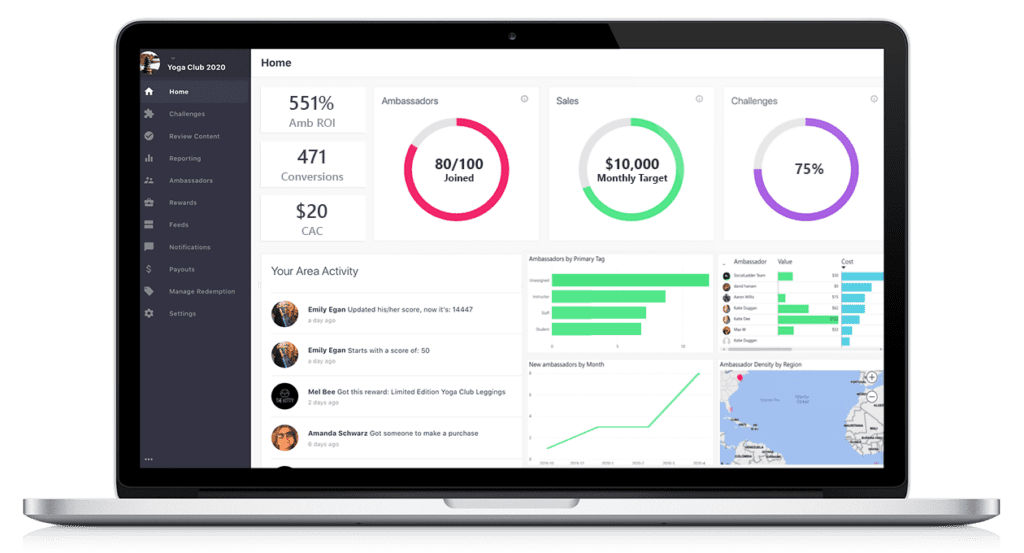
One of the biggest challenges for marketers executing a strategy like this one is knowing how to measure influencer marketing ROI.
In fact, 33% of marketers don’t even measure it.
As with any other marketing strategy, measuring the return on investment is crucial for any marketer to understand the success of a campaign. Without this data, you won’t be able to make informed decisions about improving your strategy.
But most importantly, you won’t know if you are wasting your budget or if you should increase your investment.
In this guide, we will show you how to successfully measure the ROI of your influencer marketing campaigns.
The problem with not measuring influencer marketing ROI
Many brands don’t track the ROI because it seems like there are too many metrics to keep up with, and if they see an overall increase in sales, that is good enough for them.
But having that approach will negatively impact the effectiveness of the campaign.
Think about it, this wouldn’t tell you exactly what is responsible for the increase, who was the top-performing influencer or if another marketing campaign is responsible.
Additionally, there are metrics other than sales that can mean a successful campaign. If you are not tracking them as well, you won’t have a correct assessment of the situation. More on this below.
Recommended: FTC Compliance in 2021: Best Practices For Social Media Influencers And Content Creators
What is the average ROI of influencer marketing
All influencer marketing campaigns are different, so the ROI varies. But there are influencer marketing ROI statistics that can give you an idea of what you can expect from your campaigns.
According to a report from Influencer Marketing Hub, on average, brands earned $5.78 per dollar spent on influencer marketing in 2019.
However, top-performing brands reported they earned up to $18 per dollar spent.
As you can see, there is huge potential for well-executed influencer campaigns. That’s why the industry is growing so fast. According to the same report, the influencer marketing industry is set to grow to approximately $13.8 Billion in 2021.
To put that into perspective, that number was only $1.7 billion in 2016, and $9.7 billion in 2020.
Now, let’s see how you can measure the success of your own campaigns.
Recommended: The Value of Influencer Marketing In 2021
How to measure influencer marketing ROI in four steps
1. Set your goals
First, you need to set your goals and expectations for your campaign.
Ultimately, you want an increase in sales, but with influencer marketing, you should look at the bigger picture. It should be clear to you which goals you’d like to achieve.
As we mentioned before, just having sales in mind is not ideal. So, also think about increasing brand awareness, referrals, user-generated content, building an audience, earned media value, etc.
Knowing this, you will be able to plan the right strategy to achieve them and you will know which metrics you need to track.
2. Determine your KPIs
Now, think about the goals you have in mind and determine which metrics are related. For example, if your goal is to increase brand awareness, impressions and clicks to your site are metrics you should track.
Those metrics will be your key performance indicators (KPIs). Meaning that based on those metrics you will know if your influencer campaigns are being successful.
Then, you should set a realistic target for those metrics. As you execute more influencer marketing campaigns, adjust the target and this will let you know how well the influencers are performing.
Below, we explain the different metrics you can use and the best ways to track them.
3. Evaluate your investment
How much will it cost to run your strategy? You should already have this figured out when creating your strategy.
To determine how much your campaign will cost you need to consider how much influencers will charge, the different payment methods, production costs, tax implications, and the tools you will need to manage the campaign.
For this point, you need to consider what type of influencer will benefit your strategy the most. There are:
Nano influencers: 1,000 – 10,000
Micro influencers: 10,000 – 50,000
Mid-tier influencers: 50,000 – 500,000
Macro influencers: 500,000 – 1 million
Mega influencers: 1 million – 5 million
Celebrity influencers: Over 5 million followers
As you can imagine, the more followers they have, the more they will charge. How much they charge also varies on the social media platform they will be creating the content for.
For example, this is what Instagram influencers generally charge on average. Note that these figures are just to give you an idea and they are not accurate for every influencer.
Nano influencers: $10 – $100
Micro influencers: $100 – $500
Mid-tier influencers: $500 – $5,000
Macro influencers: $5,000 – $10,000
Mega influencers: $10,000 – $50,000
Celebrity influencers: Over $50,000 (even hundreds of thousands)
To know how much influencers charge for other social media platforms and everything else you need to know about influencer marketing, check out our guide: Influencer Marketing: The Ultimate Guide for 2021
With your KPIs and your budget set, you can have a clear picture of how effectively your investment is being spent.
Recommended: How Benefit Cosmetics Manages Their Micro Influencers
4. Track your metrics
Now, the only thing that’s left is to track the metrics you chose. Depending on the metric, there are different ways to measure them.
Let’s take a look at how you can track the most common metrics.
Revenue/Conversions
To track the revenue and conversions of your influencers, you need a way to track how many people coming from the promotion resulted in a purchase.
The best method is to use affiliate/referral links and unique promo codes. The first option is unique links provided to influencers that are generated for specific products. When people click these links, they are able to track if the visitor made a purchase.
The reason why it’s the best method is that it gives brands a clear return on investment from each influencer. Allowing you to know exactly how many purchases resulted from the campaign and which ones are performing better.
Generating this type of link requires tools. SocialLadder’s deep links feature allows influencers to generate their own links for any product on your site. This way, they can choose the products they like the most, generate a link, and use it in their social media content.
Then, the number of clicks and purchases will be captured in real-time in the SocialLadder platform.

On the other hand, unique promo codes are special codes provided to influencers, generally, this code is the name of the creator.
Then, people have to manually type this code in the purchase form of your website in exchange for a reward. This approach also works but you have to consider that some people coming from the campaign will make purchases without the code.
So affiliate/referral links are smarter, but promo codes are also great.
Awareness/Impressions
If you want to track the brand awareness resulting from the campaign (you should) you need to track the impressions and clicks.
Awareness is a very important indicator because more people looking at your brand and new products, means more opportunities to engage with them. This translates into potential future purchases.
The unique links we mentioned in the previous point are also helpful for tracking awareness because they allow you to track every click to your site.
Another method to track impressions and pageviews is using Google Analytics. With this tool from Google you can see how many people visited the landing page for your promotion.
Engagement/Likes, shares, comments, followers, mentions
With engagement, we mean the number of interactions social media posts get. To track these interactions, you can check out the social media analytics page.
Also, track your social media follower counts.
Something else you could be tracking is how many times your brand gets mentioned online. This is called social listening, and it is useful because it lets you know if there is an increase in the attention your brand is getting.
The amount of brand mentions you get is a good indicator of a positive increase in earned media value.
Leads/Email subscriptions
Lead generation is a very important part of any sales funnel. It is the first step in which people first interact with your site, showing some interest in your product or service. Some people are not ready to make a purchase right away, but they are potential customers.
One way to track inbound leads coming from your campaigns is by counting your new email subscriptions. People who sign up for your newsletter, a promotion, contact form, or any interaction where they leave their email address.
Doing so makes them a lead because now you can engage with them through email marketing.
Final thoughts on influencer marketing ROI
Tracking sales gives you a direct return on investment number, but it doesn’t tell the full story. You have to take into account that other metrics can also give you results that can be considered a good ROI. For example, brand awareness for new launches.
Other variables that you should consider are:
Influencer content repurposing
If you agree with the influencer that the content can be repurposed for other marketing purposes like email marketing, ads, or any other campaign, then the ROI could be higher. This way, a single collaboration can result in long-term benefits.
Time of the year
Influencers are generally busier in the holiday season, so the investment could increase if you are planning a social media marketing campaign in certain months.



